Previously, when mentioning Dong Van Stone Plateau (Ha Giang), people remembered a place full of hardships with terrain mainly rugged and dangerous rocky mountains. In 2010, the Dong Van Stone Plateau Geopark dossier was officially recognized as a Global Geopark by the UNESCO Global Geopark Network Advisory Council, thereby, with the attention of all levels, sectors and people, especially Ha Giang province, the appearance of Dong Van Stone Plateau has changed and improved a lot.
Dong Van Karst Plateau National Tourist Area (DLQG) is the entire Dong Van Karst Plateau UNESCO Global Geopark, including 04 districts of Dong Van, Meo Vac, Yen Minh and Quan Ba of Ha Giang province, bordered by: China to the North and East; Bac Me Ha Giang district and Bao Lam Cao Bang district to the South; Vi Xuyen Ha Giang district to the West. With a total area of 232,606 hectares, of which the area focusing on developing tourism services is about 2,000 hectares.
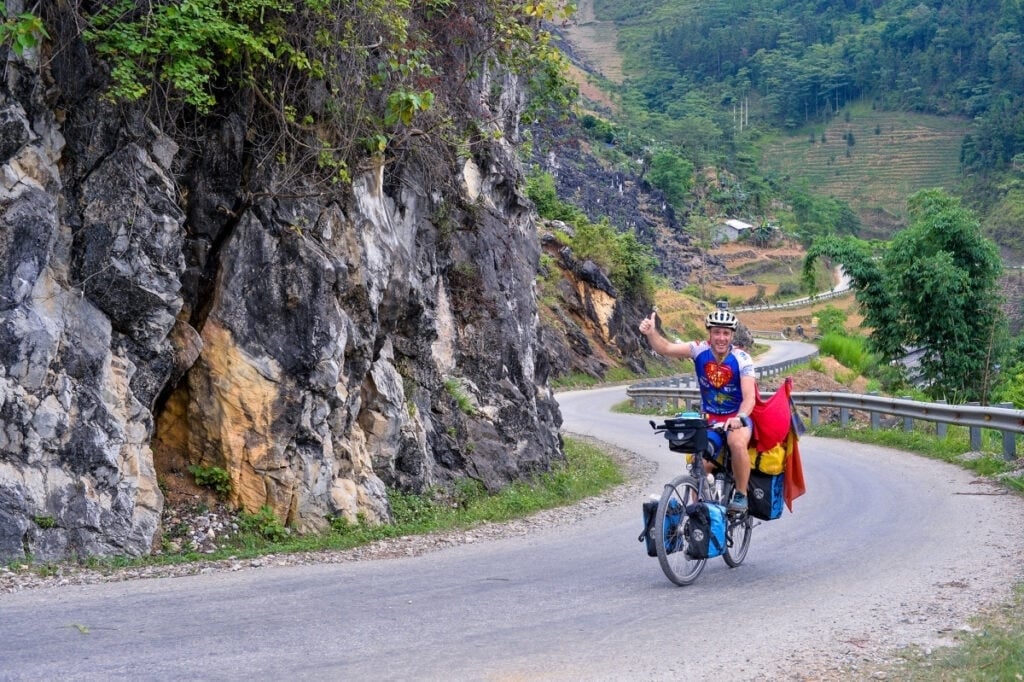
Tourists come to the Stone Plateau (Photo: Internet)
Developing tourism in Dong Van Karst Plateau National Tourist Area associated with the title of UNESCO Global Geopark, mainly in the form of preserving and promoting the overall value of heritage types, effectively exploiting the value of tourism resources, in which geological heritages play a key role, national cultural heritages are the identity, focusing on conservation, biodiversity, environmental protection, natural disaster mitigation and effective response to climate change.
With links to key tourism and service areas of the province, destinations in the Northern Midlands and Mountains region and the UNESCO Global Geopark Network. In a sustainable and professional direction, ensuring the interests of the community, contributing to hunger eradication and poverty reduction and restructuring the local economy, ensuring national defense and security, national territorial integrity and social order and safety. With focused and key investments; promoting socialization and diversifying investment resources. The goal is to strive by 2025 to develop the Dong Van Karst Plateau UNESCO Global Geopark into a special tourist area, representing Ha Giang province with synchronous and modern facilities. By 2030, meeting the criteria and being recognized as a National Tourist Area.
Specifically, by 2025, it will welcome 950,000 visitors, of which 250,000 will be international visitors. It strives to welcome 1.1 million visitors by 2030, of which over 380,000 will be international visitors. Total revenue from tourists by 2025 will reach about 2,800 billion VND and strives to reach about 5,000 billion VND by 2030. The development target for accommodation facilities in 2025 is about 5,700 rooms; in 2030, about 9,000 rooms. The employment target by 2025 is to create jobs for 8,600 direct workers. It strives to create jobs for over 13,000 direct workers by 2030.
Thereby, the development orientation focuses on exploiting the tourist market from the capital Hanoi, urban areas in the Red River Delta, such as: Quang Ninh, Hai Phong, Nam Dinh, Ninh Binh, Thai Binh, provinces in the Northern Midlands and Mountains, such as: Phu Tho, Son La, Lai Chau, Dien Bien; gradually expanding large markets in the Central and Southern regions such as Da Nang, Can Tho city, Ho Chi Minh City... Focusing on tourists visiting geological heritage, ecology, geological education, cultural tourism, resorts, health care, urban and event, entertainment.
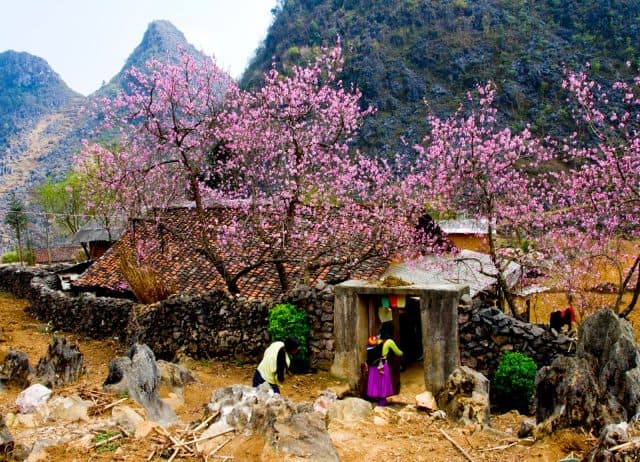
Tall, sturdy stone fences surround small houses (Photo: Internet)
Prioritize developing markets with high spending capacity: Western Europe (France, Germany, UK...), North America (USA, Canada), Japan, Korea; expand markets from ASEAN countries (Laos, Northern Thailand, Cambodia), Taiwan, China and Eastern European countries. Focus on tourists who research, learn, experience, explore the landscape, the value of the Global Geopark, special agricultural ecology and adventure sports.
Developing on the basis of exploiting the value of geological heritage and the UNESCO Global Geopark of Dong Van Stone Plateau, community tourism developing on the basis of exploiting the value of national cultural heritage, nature tourism: Developing on the basis of exploiting biodiversity characteristics and experiencing nature, adventure sports tourism, urban and event tourism.
Promote activities such as: a day with Pao; Khau Vai love market; a day with the Meo King at the Vuong Dynasty architectural and artistic relic site; a day of farming with the Mong people in Meo Vac; walking street and festival of Dong Van ancient town; adventure sports tourism with hot air balloons and paragliding; tourism to explore the Mien River.
Promote the development of 04 tourist centers including Dong Van Cultural and Historical Tourism Center associated with sightseeing tourism, historical culture, and geological research; Meo Vac Scientific and Adventure Tourism Center associated with eco-tourism, exploration, culture, and geological research; Yen Minh Eco-tourism and Green Urban Center associated with eco-tourism including recreational activities in the form of ecology and agro-ecology, sports; Quan Ba High-class Entertainment and Tourism Center associated with recreational, sports, and event tourism.
The Youth Volunteer Cultural Park tourist area of Xeo Sa Lung village, Pai Lung commune, Meo Vac district is developed based on the Youth Volunteer Monument as the center and expands its functions into a cultural and spiritual park. The Ma Pi Leng adventure sports tourism area in Tu San canyon develops adventure sports tourism. The Thai An hydroelectric reservoir tourist area in Thai An commune, Quan Ba district develops eco-tourism, lake resorts, sports, and water-based entertainment.
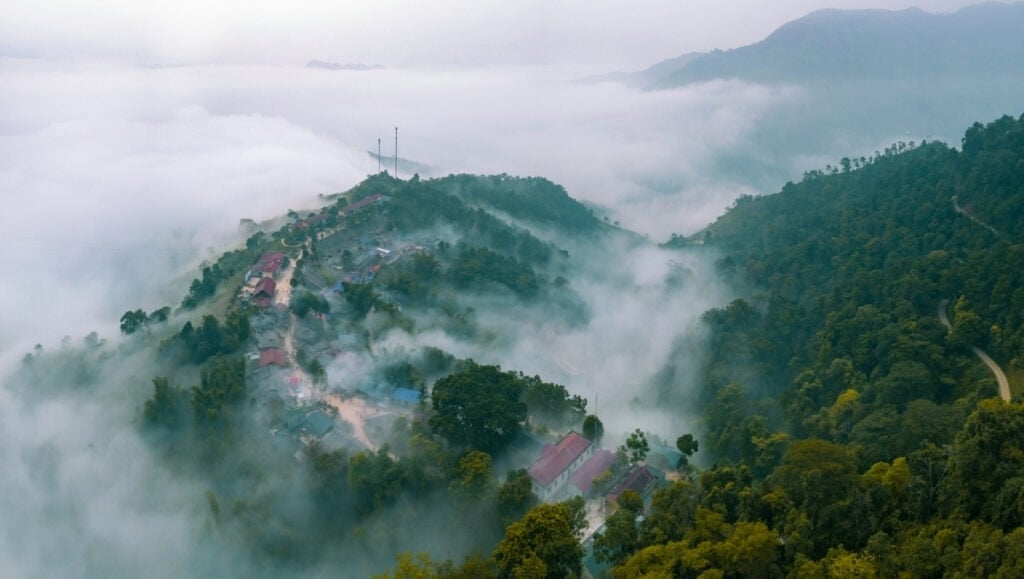
Another third prize winner is called Khau Vai Love Market by Bui Viet Duc (Vinh Phuc). He took this photo in December 2019 in Meo Vac.
Quan Ba resort and health care tourism area in Quyet Tien commune, Quan Ba district develops resort and health care tourism and exploits the potential of medicinal herbs. Nam Dam eco-tourism area in Quan Ba commune, Quan Ba district develops resort, health care tourism and eco-tourism. Focus on important tourist destinations such as: Nam Dam district, Quan Ba district, Buc Ban district, Yen Minh district, Lung Cam Tren district, Thien Huong district, Dong Van district, Lo Lo Chai district, Dong Van district, Pa Vi Ha district, Meo Vac district, Na Trao district, Meo Vac district, Ban Tong district, etc.
Ecotourism sites or Ecotourism Centers: Du Gia National Park, Bat Dai Son Nature Reserve, Quan Ba Species - Habitat Conservation Area, Chi San Species - Habitat Conservation Area. Sightseeing spots with valuable landscapes and geological heritages include: Lung Khuy Cave, Na Luong Cave, Dragon Cave, Thach Son Than, Na Khe pine forest, Hai Cau Rock Beach, Moon Rock Beach... Vuong House, Lung Cu Flagpole, Khau Vai Market, Phong Luu Market... Binh An Temple, Lang Dan Temple, Quan Cong Temple, Quan Am Pagoda, Lung Cu Temple, Ong Temple, Ba Temple... Traditional craft villages: Thanh Van Wine, Thanh Van Commune, Quan Ba District, linen weaving in Hop Tien Village, Lung Tam Commune, Quan Ba District...
Prioritize the development of accommodation facilities in Dong Van tourist centers (controlling the height of the floors in the conservation area), Meo Vac, Yen Minh, Quan Ba; resort blocks in Tam Son town, Yen Minh town, subdivisions: Quan Ba health care, Nam Dam ecology, Thai An hydroelectric reservoir; develop the type of accommodation facilities in people's homes (Homestay) in Dong Van, Yen Minh, Meo Vac tourist centers and community tourism spots.
Focus on developing high-end night entertainment areas in Tam Son and Yen Minh towns; Night markets and night tourist streets in Yen Minh, Dong Van and Meo Vac towns; Theme parks and sports in Yen Minh town; Sports areas associated with rivers on Thai An hydroelectric lake; Adventure sports areas in Ma Pi Leng.
Build service complexes at rest stops; commercial service establishments at tourist centers; standard souvenir service areas in subdivisions and tourist spots. Develop food service establishments following the restaurant model, cultural markets, and develop tourism in the reception center area. Protect tourism resources and environment, invest in reducing and recycling waste from tourism.
Develop and issue specific mechanisms for Dong Van Karst Plateau National Tourism Area based on local conditions with the principle of optimal support to attract investors. Encourage training and use of local human resources to serve tourism development activities; reduce taxes and provide financial incentives for tourism development projects with community participation.
Mobilize the community to participate in self-management of geological heritage clusters and tourism exploitation. Develop regulations for the community self-management system, with strict and public rewards and penalties. Effectively mobilize all resources to invest in the development of Dong Van Karst Plateau National Tourist Area, including capital from GDP accumulation of tourism enterprises; foreign direct investment (FDI); state budget capital; loans from ODA sources; socialized capital. Priority is given to attracting investment sources into centers and subdivisions according to the planning to develop technical facilities for tourism.
Develop tourism products based on traditional cultural events; collect, research, exploit and protect typical cultural values in folklore such as the languages of ethnic minorities (Mong, Dao, etc.). Preserve and restore all identified geological heritage sites. Continue to research, investigate and search for new geological heritage sites at the UNESCO Global Geopark of Dong Van Stone Plateau.
It is strictly forbidden to exploit construction materials, natural stone, and minerals on both sides of the main traffic corridor and around geological heritage sites. Focus on connecting with Hanoi City, seeking help and support from the Ministry of Culture, Sports and Tourism and international organizations, especially UNESCO. For the team of tour guides and interpreters, priority is given to using local labor to create jobs and increase income for the people.
Build and promote the brand of handicrafts and agricultural products of the area, ensuring that local communities benefit from tourism development. Enhance tourism products and nighttime entertainment activities to extend the length of stay of tourists. Develop community tourism in cultural villages in the form of building diverse experiential activities in cultural villages in which people play the role of tour guides.
Applying information technology to promote “smart tourism” at Dong Van Karst Plateau National Tourist Area. Building a smartphone-friendly website, integrating online payment tools to promote retail channels on mobile platforms and digitizing data. Including the Dong Van Karst Plateau tourism promotion plan in the general promotion plan of Ha Giang province and allocating appropriate budget for this activity. Strengthening integration and connection with other global geoparks in the region and the world to build brands and promote images.
Vuong Thanh Tu


![[Photo] Buddha's Birthday 2025: Honoring the message of love, wisdom, and tolerance](https://vphoto.vietnam.vn/thumb/1200x675/vietnam/resource/IMAGE/2025/5/12/8cd2a70beb264374b41fc5d36add6c3d)

![[Photo] Prime Minister Pham Minh Chinh works with the Standing Committee of Thai Binh Provincial Party Committee](https://vphoto.vietnam.vn/thumb/1200x675/vietnam/resource/IMAGE/2025/5/12/f514ab990c544e05a446f77bba59c7d1)


![[Photo] Prime Minister Pham Minh Chinh starts construction of vital highway through Thai Binh and Nam Dinh](https://vphoto.vietnam.vn/thumb/1200x675/vietnam/resource/IMAGE/2025/5/12/52d98584ccea4c8dbf7c7f7484433af5)

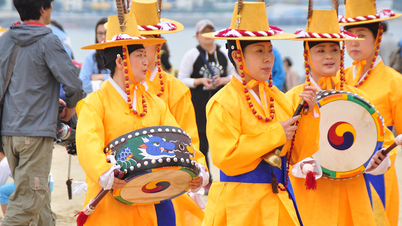



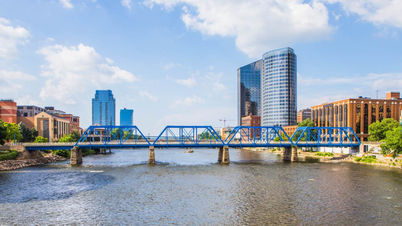




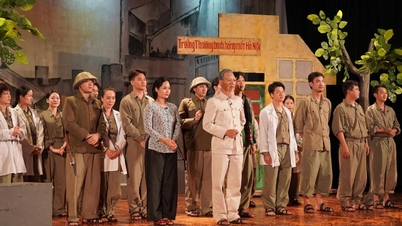
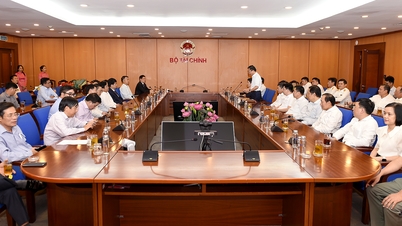


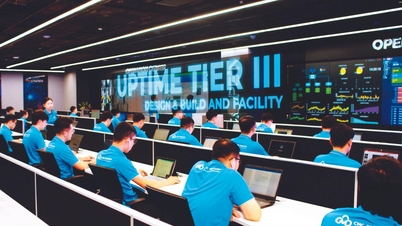











































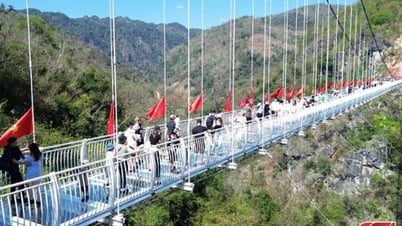
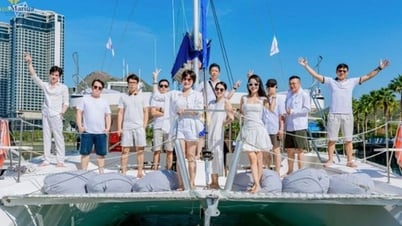
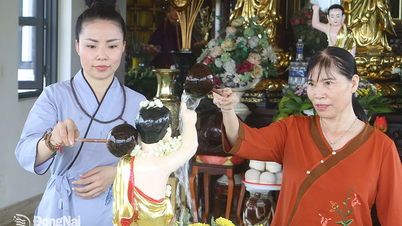



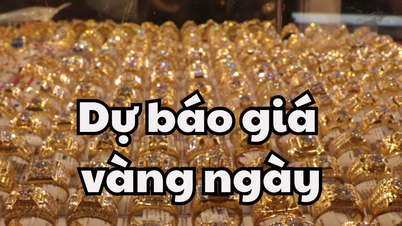
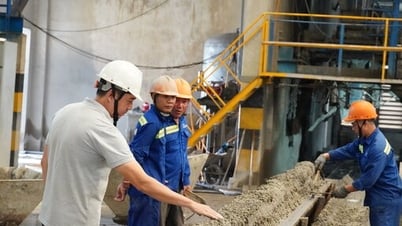

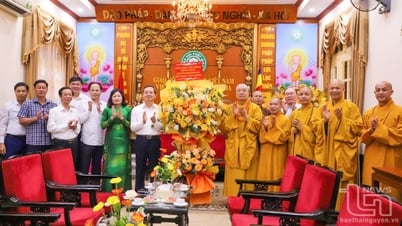

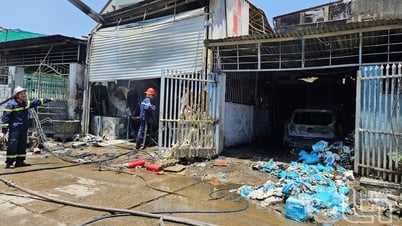











Comment (0)